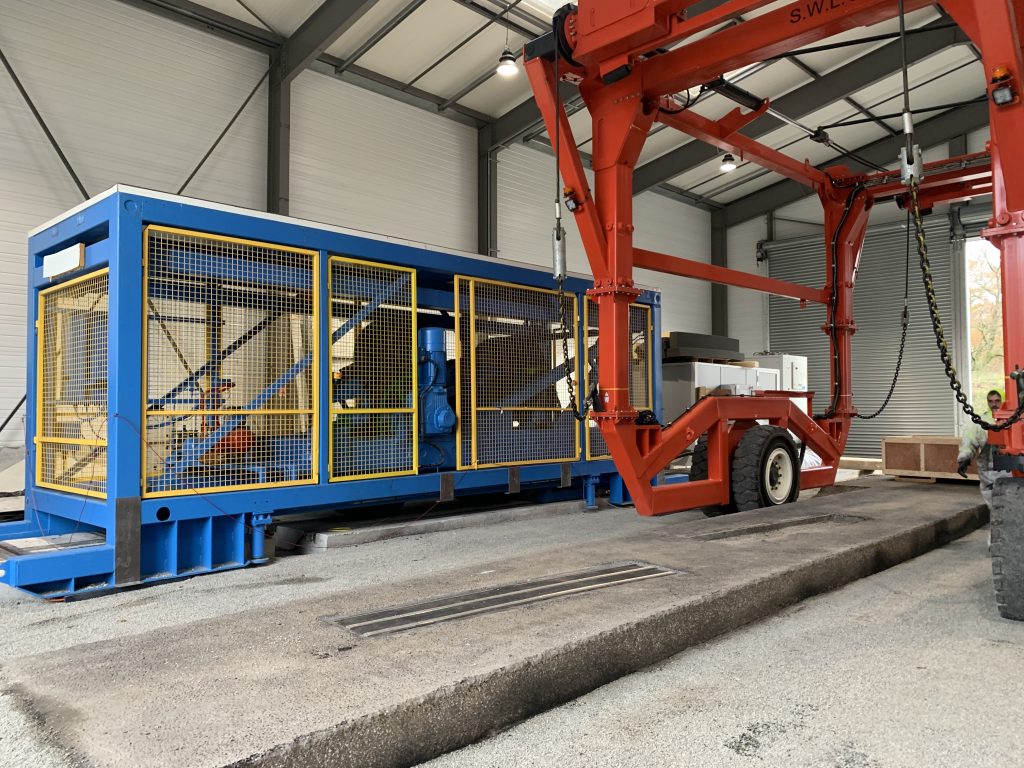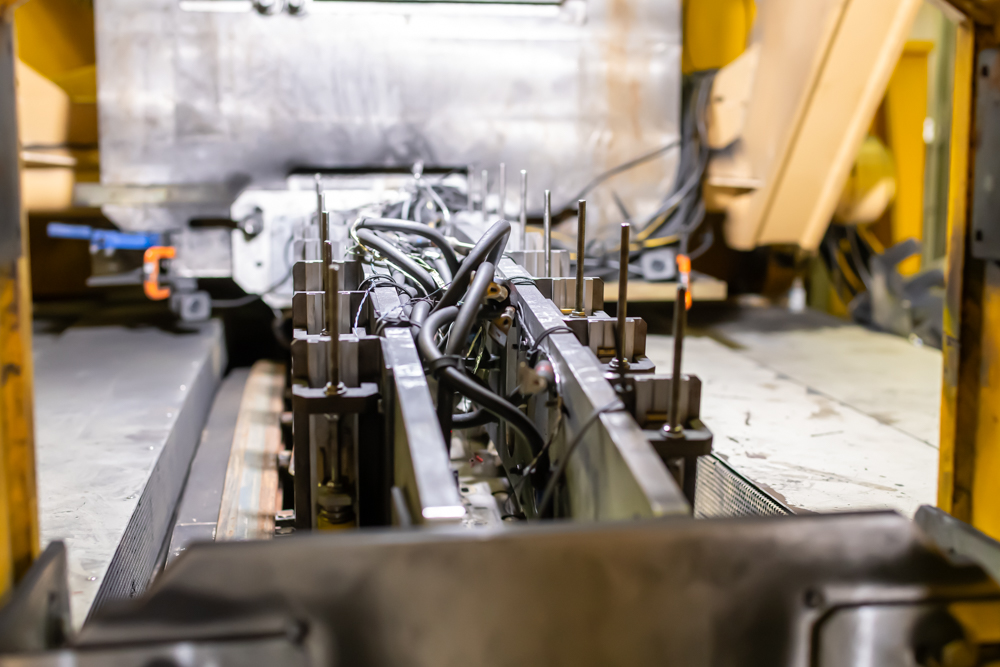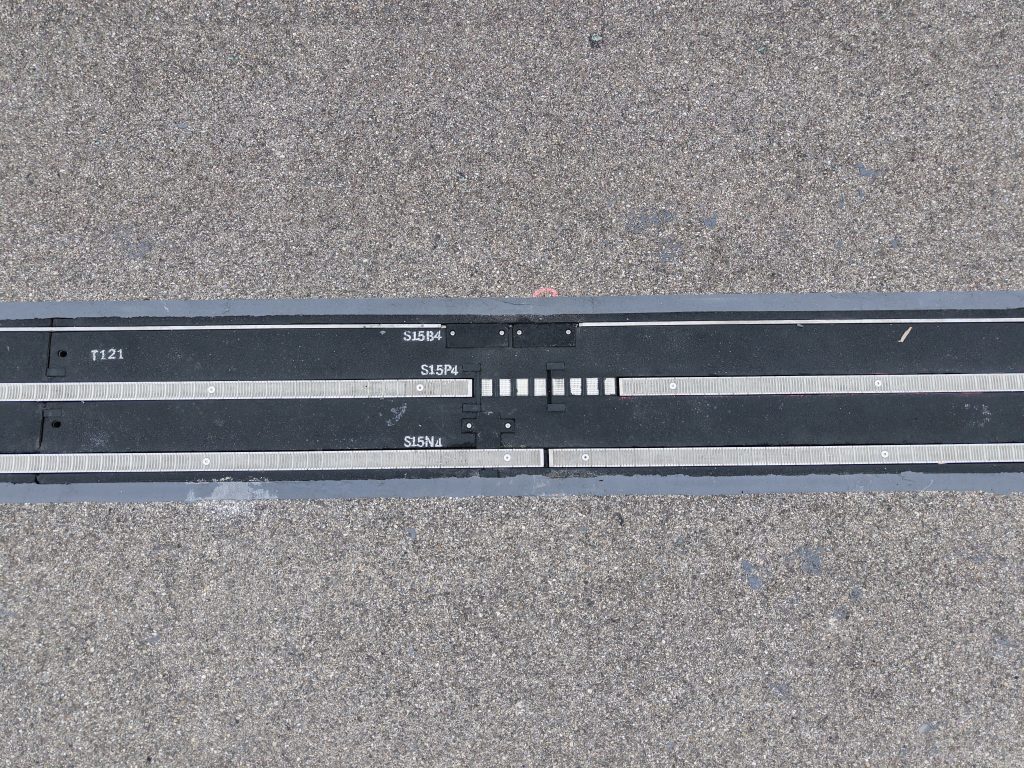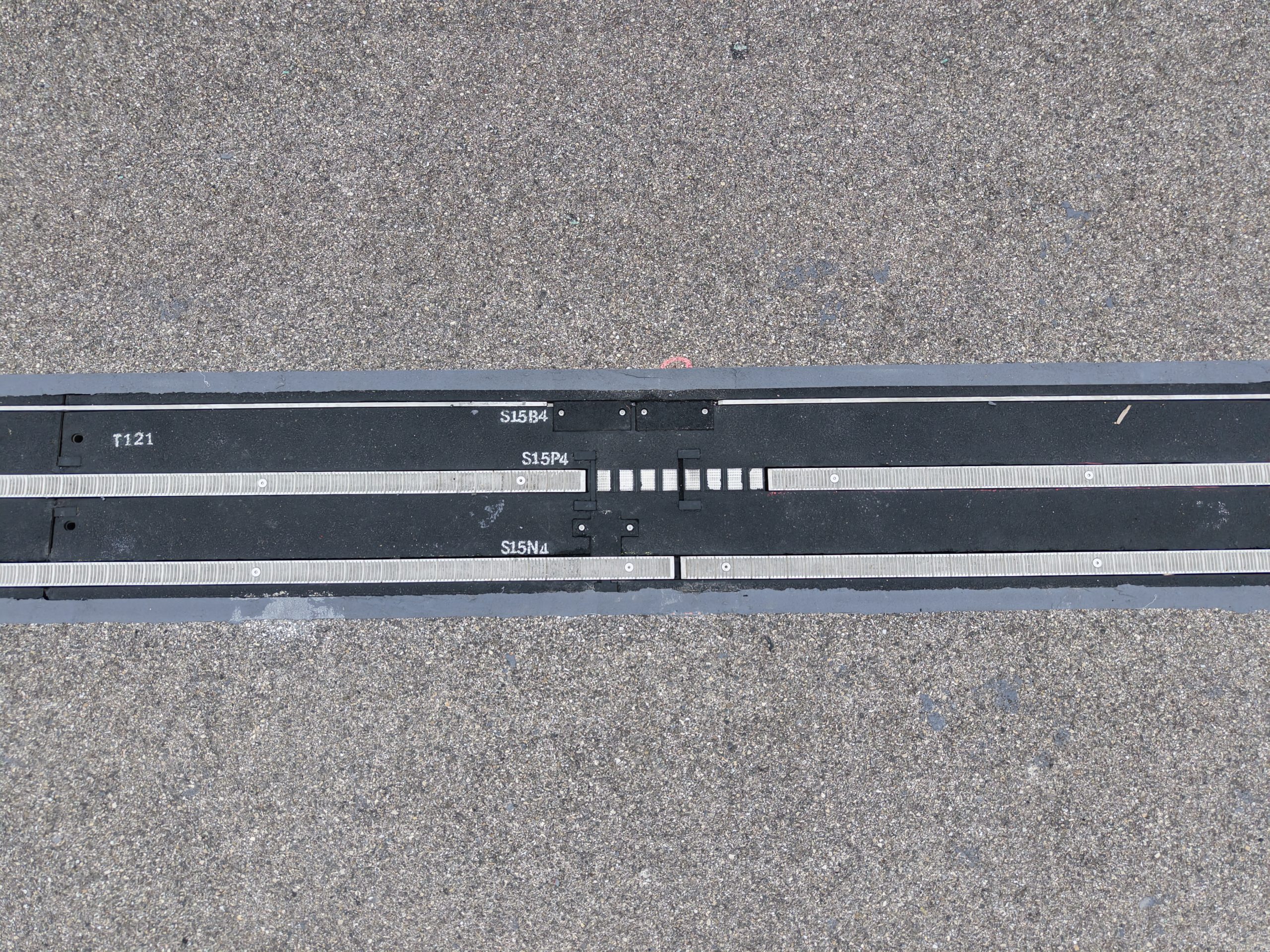Full-scale tests were carried out at the Nantes campus of the Université Gustave Eiffel to assess the mechanical behaviour and durability of a carriageway incorporating ERS (Electrical Road System) conductive rail components developed by Alstom for charging electric lorries, under heavy road loading. Three configurations were tested, including two with an ERS element inserted in the carriageway using two different bonding resin solutions, and a wearing course maintenance solution for renewal.
The tests were conducted with the FABAC traffic simulator (FAtigue des chaussées en Béton Armé Continu – Fatigue of continuously reinforced concrete carriageways) for each of the three configurations, for up to 200,000 trips made by standard paired French HGVs loaded to 6.5 tonnes and at ambient temperature. This traffic represents the number of HGVs traveling diagonally across the conductive rail, which corresponds to a lane change situation (generally 20% of total HGV traffic, 10% of which travels in the same place) and on a motorway with 1,800 HGVs per day for 15 years.
These FABAC tests produced good results. Good durability was observed on the two panels with ERS element insertion: one (panel A) with Edilon-Sedra VA90 resin, the other (panel B) with Aximum P5G Grenat resin. Panel C, simulating maintenance work, made it possible to test the implementation stages of two different solutions for the longitudinal joint between the ERS element and the carriageway, one with Tok-band SK adhesive tape and the other with the same Aximum resin solution as in panel B, as well as compaction around these joints.
The full-scale studies as a whole enabled progress to be made in optimising the construction process for the various insertion solutions, and valuable lessons to be learned for the next stages of the project.





